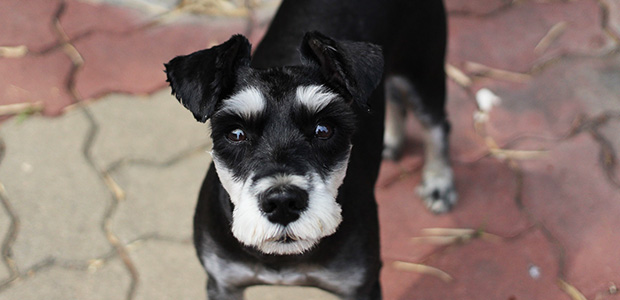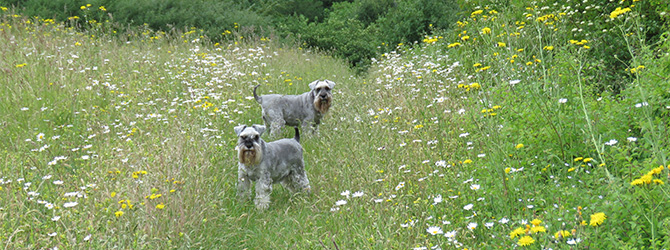The Schnauzer: thinking of getting a Schnauzer?
Schnauzers are intelligent dogs with lots of integrity. They often love to play with children and are happy to join their owners for outdoor adventures.
Let’s take a closer look at the Schnauzer.
Place of origin: 14 – 15th Century Germany
How big do Schnauzers get? 30 – 36cm (Miniature), 47 – 50cm (Standard), 65 – 70cm (Giant)
How heavy are Schnauzers? 5 – 8kg (Miniature), 14 – 20kg (Standard), 34 – 43kg (Giant)
Life Expectancy: 12 – 14 years (Miniature), 13 – 16 years (Standard), 10 – 12 years (Giant)
Types of Schnauzer: Standard, Miniature, Giant
Colour: White, Black, Salt & Pepper, Black & Silver
Please note: A dog’s exercise, training/stimulation and grooming requirements can depend on several factors such as age and health. The same goes for ongoing costs of ownership. For advice on one specific dog, we always advise chatting with a vet.
How much exercise does a Schnauzer need?
Schnauzers were originally bred to hunt rats. As such, they’re highly intelligent breeds with bags of energy and a keen eye for prey – or at least, what they think of as prey.
Your Schnauzer will need 3 medium-sized or 2 long walks every day to keep them healthy and mentally stimulated. You can channel their hunter’s instincts by playing fetch while out and about, or keeping them busy by playing other games.
Your Schnauzer will happily accompany you on treks or runs too. Just bear in mind that you may need to keep them on the lead in well-populated areas – they may run off if they’re distracted by something they mistake for prey.
Training: how to train a Schnauzer
Schnauzers are naturally very independent and aren’t always the easiest dogs to train. Begin their training when your dog is young, or when you first bring them home if you have adopted your Schnauzer.
As with every breed, use positive reinforcement and reward-based training at all times. With plenty of this (plus a bit of patience, perhaps) your Schnauzer will become perfectly well-socialised in no time.
Try to channel their hunter’s instinct by playing retrieve-based games such as fetch. This will help to keep your Schnauzer engaged with the task at hand.

Grooming: do Schnauzers shed?
Schnauzers need a fair amount of grooming in order to look their best. Their fur is naturally wiry, especially around their beard and legs, which will need brushing every day to ensure the fur doesn’t become tangled.
A lot of owners keep their Schnauzer’s fur clipped quite short. Depending on your grooming ability and the size of your Schnauzer, this may require a trip to the local groomer.
Schnauzers shed an average amount, more so when their fur is short and during moulting season.
Complete your Schnauzer’s grooming routine with regular tooth brushing, nail clips and ear checks.
Schnauzer temperament, socialising and ideal home environment
It's safe to say that Schnauzers feel more comfortable around people than they do around other animals. Given their origin as rat-catchers, a Schnauzer won’t take too kindly to small pets or other pets that they aren’t too familiar with.
That said, if you introduce your young Schnauzer to existing pets in a household, or introduce them to a variety of people, pets, sounds and smells when they’re a puppy, they’ll grow up to become friendly and well socialised.
Schnauzers typically get along very well with children. They’re ideally suited to active families who love to explore the great outdoors and would love their canine companion to come along with them.
Cost of owning a Schnauzer
When considering the lifetime cost of owning a Schnauzer, remember to take into account:
- Food and diet
- Veterinary care
- Pet insurance
- Kennels or dog sitters
- Regular grooming costs
- Toys and equipment
Need more info?
For more info on finding the best dog breed for you and your lifestyle, have a chat with your vet.
Find your nearest vet using our Find a Vet page, or speak to a vet online using Online Vets.

